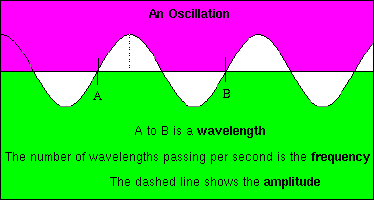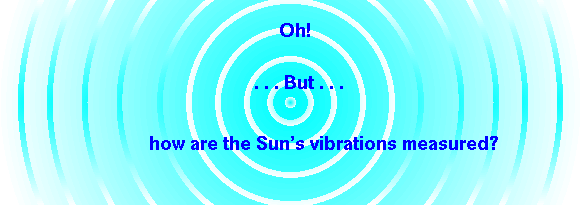 |
 |
Helioseismology is the study of the Sun's interior. We can't use light to do this. Instead we measure vibrations of the surface caused by sound waves.
You can recognise the sound of a bell, a drum or a piano without seeing it played. In helioseismology, we are searching for tiny differences in the Sun's sound waves - something like trying to hear the difference between a Stradivarius and an ordinary violin.
Did you know that sound travels much faster through solids and liquids than through air. That's why American Indians used to put their ears to the ground to listen for horses! The speed of sound waves varies at different places inside the Sun.
Helioseismology gives us important information about the solar interior. By measuring the frequencies (the number of vibrations, or oscillations, every second), wavelengths, amplitudes (size of the oscillations) and other properties of the vibrations we can find out a lot of information about what is going on in the Sun.

The Sun resonates. A glass will do this if someone sings a note of the same frequency as the glass rings at, when you ping it with your finger.
To carry out observations of the Sun's vibrations, solar astronomers either use space missions like SOHO or build networks of ground based instruments like GONG (Global Oscillation Network Group - A network of six identical instruments distributed around the world to continuously observe of the solar surface).

To find out, click on it!


|